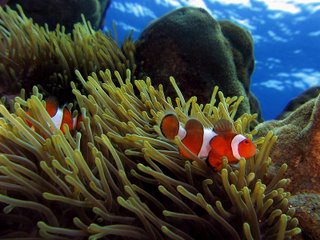
Question 1.1

The Nucleus is responsible for cell reproduction. Within the nucleus is the DNA responsible for providing the cell with its unique characteristics.
The Nucleolus produces ribosomes, which moves out of the nucleus and take positions on the rough endoplasmic reticulum where they are critical in protein synthesis.
Ribosomes manufacture proteins and are found along the rough endoplasmic reticulum and cytoplasm.
Rough Endoplasmic Reticulum consists of many ribosomes attached to it. It is involved in the synthesis and transportation of proteins. It works in concert with the golgi apparatus to target new proteins to their proper destination.
Golgi Apparatus are involved in transport of molecules in a cell by packaging them in vesicles. They are involved in modifying proteins from the Rough Endoplasmic Reticulum.
Lysosomes contain hydrolytic enzymes necessary for intracellular division. In what blood cells that eat bacteria, lysosome contents are carefully released into the vacuole around the bacteria and serve to kill and digest those bacteria.
The Plasma membrane is a thin layer around the cell. It is partially permeable and controls the substances that enter or exit the cell.
Mitochondria provide the energy a cell needs to move, divide, produce secretary products, contract - in short, they are the power centers of the cell. They are about the size of bacteria but may have different shapes depending on the cell type.
Question 2A
If I could create a new function for animal cells, i will create a salt producing organelle in our cells. Mankind needs salt in the diet in order to live and, as the body cannot manufacture it, we are reliant on salt for sodium intake. Salt is a substance that keeps us alive. Although organisms need water to survive instead and may suffer from dehydration or hypertension due to high amounts of sodium in the body, BUT imagine if
SALT IS ESSENTIAL FOR BODY FUNCTIONS.
Ignore hypertension forever then. Salt wont be harmful in our body unless we consume it. It'll be known to be harmful although it enhances the flavour in food.
Salt in our body thus will benefit us ever more. Due to a higher concentration of salt in our body, it will enable us to stay afloat on water. People will not drown during floods or tsunami. Imagine being able to walk on water! Going against the universe, how cool will human life get?!
|
Interesting fact about biology!
Source: Wikipedia
Ever heard of this term?
Defination of hermaphrodite: A person born with both male and female sex organs.
Hermaphroditism do occur in animals, plants and even HUMANS!
In many species, hermaphroditism is a common part of the life-cycle, particularly in some asexual animals and some plants. Generally, hermaphroditism occurs in the invertebrates, although it occurs in a fair number of fish, and to a lesser degree in other vertebrates. For hermaphrodites that belong to a species in which hermaphroditism is not normal (humans, for example), reproduction is mostly impossible.
There are several types of hermaphrodites in animals.
Sequential hermaphrodites
Sequential hermaphrodites are organisms born as one sex which later change into the other sex, and can only function as one sex at one time. A few species in this group can sex change multiple times, but they can only function as one sex at a time.
Protandry: The organism starts as a male, and changes sex to a female later in life.
Example: The Clownfish
Protogyny: The organism starts as a female, and changes sex to a male later in life.
Example: Wrasses
(Go check them up!)
Simultaneous hermaphrodites
A simultaneous hermaphrodite (or synchronous hermaphrodite) is an organism that has both male and female sexual organs at the same time as an adult. Usually, self-fertilization does not occur.
Hamlets, unlike other fish, seem quite at ease mating in front of divers, allowing observations in the wild to occur readily. They do not practice self-fertilization, but when they find a mate, the pair takes turns between which one acts as the male and which acts as the female through multiple matings, usually over the course of several nights.
Gonadal dysgenesis
Gonadal dysgenesis is a type of intersexuality formerly known as "true hermaphroditism". It occurs in about one percent of mammals, including human beings, but it is extremely rare for both sets of organs to be functional; usually neither set is functional. In humans, these manifestations are often altered (sometimes only cosmetically) to resemble standard male or female anatomy shortly after birth.
You can try checking these sites out to know more about gonadal dysgenesis, but please don't mind the content.
http://www.angelfire.com/ca2/BornHermaphrodite/
http://www.rotten.com/library/sex/hermaphrodite/
I hope you've learnt more about something!